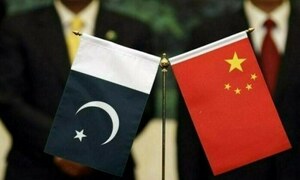Compliance Risk Management System (CRMS) transforming trade facilitation and customs controls
TEXT: Director, Directorate General of Risk Management System (RMS) Without digital transformation, Customs administration cannot be modernized in 21st century. And Customs Risk Management System (RMS) is always at the core of any digitally transformed modern customs processes.
The Customs RMS technically termed as Compliance Risk Management System (CRMS) is the central and a critical function of Customs clearance system in any country of the world. It is the tool which Customs administrations all over the world are relying upon to strike a most difficult balance between trade facilitation and Customs controls. The CRMS reduces the cost of doing business, eradicates human intervention in clearance of goods, and eliminates delays in clearance process and put to an end to red tapism and corrupt practices from Customs processes of trading across borders. In addition, it brings, transparency and efficiency but keeps unpredictability in selection of consignments for inspections and documentary checks to promote compliance.
Pakistan Customs has successfully achieved the digital transformation of Customs’ core processes of trading across borders including import, export, transit and transshipment. The recent phase of digital modernization started in 2004-5 with development and introduction of Pakistan Computerized Clearance System (PaCCS) which first time introduced the Risk Management System (RMS) in Customs clearance system. It was major shift for change management in Customs administration. After its shocks and maturity, Pakistan Customs was able to develop its own customs clearance system known as the Web Based One Customs (WeBOC) with indigenous resources in 2011. Since then, the WeBOC has been scaled up in terms its scope, functions and modules ranking it as one of the modern efficient customs clearance system. The untiring efforts of customs officers and PRAL technical team and its software engineers have successfully brought the digital transformation as per needs of the businesses.
The Risk Management System has the central role for customs clearance system for imports, exports, and transit which decide and select the suspected consignments for physical inspections and allows the rest to be cleared through fast track green channel. There is no human intervention in selectivity of consignments by the RMS. Its decision is purely data driven, based on the risk profiling system of traders and goods crossing borders and the regulatory requirements of country. Hundreds of frisk actors, flexible and inflexible risk rules are accounted for by the RMS software for its decision making to identify the risky and no risky consignments to be checked and not to be checked by Customs.
The RMS has also been refined with passage of time by self-learning, with assistance of donor agencies and by adding technological modern tools and support systems. The important addition to RMS system was the introduction of Artificial Intelligence (AI) and Machine learning (ML) technology. The tools were developed with World Bank experts. The important tool is known as Predictive Analytics (PA). The PA tool captures the pattern, behaviors and non-compliance trends in Goods Declarations processed in last five years through Machine learning and using the Artificial Intelligence techniques predicts the possible behavior of the declarations made to customs. The whole process in machine based. And by implementation of latest iteration of ML / AI tool in 2019, the hit rate and detections made has increased up to 87 percent reflecting the effectiveness of RMS system.
The latest efforts are made with help of Pakistan Single Window and international donors (ReMITT) to bring the capability of text mining and Natural Language Processing (NLP) to apply on the huge textual data available to customs in form of Goods Declaration for control of under invoicing, correct assessment and better targeting the fiscal frauds. This is the way forward to utilize technological tools for economic development of country. These skills will also be instrumental in developing the risk rules / criteria for embedding in other Customs tools acquired from the WCO such as Global Travel Assessment System (GTAS) for targeting suspected passengers and their baggage and Cargo Targeting System (CTS) for identifying suspected consignments. At later stage, the NLP skills can also be utilized to the National Targeting System (NTC) which is undergoing through development phases.
It was not possible for Pakistan Customs to handle ever increasing import export cargoes without application of CRMS. It enabled Customs for efficient and quick decision making for clearance of consignments which saved time and money of businesses. It also helped in reduction of port congestions otherwise ports would have been choked with containers waiting for days under manual clearances. It has tremendously supported economic growth and Ease of Doing Business. The CRM has been implemented across Pakistan and it covers all types of air, land and seaborne cargos cleared through Customs Computerized Management system. It is pertinent to mention that implementation of an effective CRM regime by Pakistan Customs has contributed towards improvement of Pakistan’s global ranking under World Banks’ Ease of Doing Business Survey from 171 in the year 2016 to 111 in 2020, under trading across border indicator.
The CRM efficiency can be seen from the figures that during last five months total of430,642 TEUs which is 66 % of total throughput (import and export) have been cleared with in few hours after checking the compliance level of traders’ declarations, goods and profiles of the importers/ exporters without any human intervention thereby reducing cost and time of clearance while improving efficiency of port operations. The direct annual savings of USD 50 million are estimated for the traders/economic operators on account of implementation of Customs Compliance Risk Management system.
RMS is a digitally driven decision making tool for big businesses and govt processes across the world.
The introduction of Artificial Intelligence and Machine learning tools in RMS, the effectiveness of system in terms of hit rate, accuracy and detections have increased many fold.
66% percent of import export cargo throughput has been cleared with in few hours by Customs by checking its compliance level by use of CRM.
The CRM has helped to improve Pakistan’s ranking in Ease of Doing Business from 171 in 2016 to 111 in 2020. It has directly saved the cost of USD 50 million annually incurred on physical inspection of goods.
Sanaullah Abro
Copyright Business Recorder, 2022






















Comments
Comments are closed.